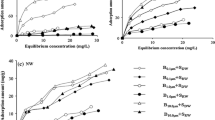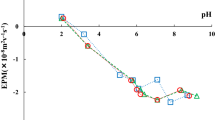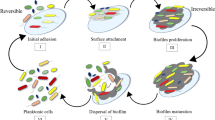Abstract
The aim of this work was to investigate the heavy metal accumulation by natural biofilms living in the catchment area of the Tisza river in Hungary, as well as in biofilms cultivated in vitro. Laboratory tests have demonstrated that metals can be adsorbed on biofilms, depending on their concentration and on the availability of free sorptive places. Biofilms were cultivated in vitro in natural freshwater from the Saale river, Germany. After reaching the plateau phase, Cu was added to reach a concentration of 100 µg/L. An increase of its mass fraction in the biofilm was observed, which caused the decrease of the concentration in the water phase. Unfortunately, the reactor wall was also found to act as adsorbent for Cu. More detailed results of our in vitro experiments will be published in a forthcoming paper. Naturally grown biofilm samples from exposed as well as background places at the Hungarian rivers Szamos and Tisza were collected in 2000 and 2002 after the cyanide spill, and analysed using total reflection X-ray fluorescence analysis (TXRF). Metal mass fraction differences as high as two orders of magnitude were found between polluted and unpolluted (background) sampling points. Extremely high concentration values, e.g. 5600 µg/g Zn in biofilm, were found at highly polluted sampling points. This means an enrichment factor of ca. 10,000 compared to the water phase.









Similar content being viewed by others
References
Woelfl S, Mages M, Mercado S, Villalobos L, Óvári M, Encina F (2003) Anal Bioanal Chem (in press)
Characklis WG, Marshall KC (1990) (eds) Biofilms. Wiley, New York
Flemming HC, Wingender J (2001) Biologie unserer Zeit. 31:169–180
Flemming HC, Wingender J (2002) Chemie in unserer Zeit. 36:30–42
Hughes MN, Poole RK (1989) (eds) Metals and microorganism. Chapman and Hall, London
Flemming HC, Schmitt J, Marshall KC (1990) Sorption properties of biofilms. In: Calmano W, Förstner U (1996) (eds) Sediments and toxic substances. Springer, Berlin Heidelberg New York
Jang A, Kim SM, Kim SY, Lee SG, Kim IS (2001) Water Sci Technol 43/6:41-48
Nelson YM, Lo W, Lion LW, Shuler ML, Ghiorse WC (1995) Water Res 29:1934–1944
Yan ND, Welsh PG, Lin H, Taylor DJ, Filion JM, Bachmann RW, Jones JR, Peters RH, Soballe DM (1995) Lake Reserv Manage 11:204
Sanz-Medel A (1998) Spectrochim Acta 53B:197–211
Friese K, Frömmichen R, Mages M, Wendt-Potthoff K (1996) Quantitative Spurenelementanalyse von biologischen Proben mit der TXRF. In: Welz B (ed) CANAS ’95 Colloquium Analytische Atomspektroskopie
Friese K, Mages M, Wendt-Potthoff K, Neu TR (1997) Spectrochim Acta 52B:1019–1025
Kraft J, Einax JW, Baborowski M, Hafner C, Kraft C, Mages M, Óvári M, von Tümpling W Jr, Zachmann D, Záray Gy (2002) Tagungsband 10. Magdeburger Gewässerschutzseminar
Goll D (2001) Modellierung der Sorptionseigenschaften von Biofilmen. Diploma work Fach-Hochschule Magdeburg-Stendal
Neu TR, Lawrence JR (1997) FEMS Microbiology Ecology 24:11–25
Quevauviller P, Vercoutere K, Muntau H, Griepink B (1993) Fresenius J Anal Chem 345:12
Ohnesorge FK, Wilhelm M (1991) Zinc. In: Merian E (ed) Metals and their compounds in the environment. VCH, Weinheim
Acknowledgements
The authors are thankful for the financial support of the Deutsches Zentrum für Luft- und Raumfahrt e.V., the Internationales Büro des BMBF, Bonn (project number HUN 01/001), as well as the Hungarian Foundation for Science and Technology (TéT) and the Hungarian Ministry of Education (project number D-17/01). Mihály Óvári would like to thank the EU Commission for the financial support in the course of the Marie Curie Individual Fellowship, contract number HPMF-CT-2002-01740. The authors also thank Mrs. Ute Kuhlicke for the confocal laser scanning microscopy investigations.
Author information
Authors and Affiliations
Corresponding author
Rights and permissions
About this article
Cite this article
Mages, M., Óvári, M., v. Tümpling, W. et al. Biofilms as bio-indicator for polluted waters?. Anal Bioanal Chem 378, 1095–1101 (2004). https://doi.org/10.1007/s00216-003-2291-5
Received:
Revised:
Accepted:
Published:
Issue Date:
DOI: https://doi.org/10.1007/s00216-003-2291-5




